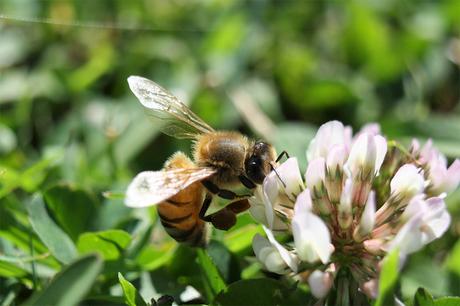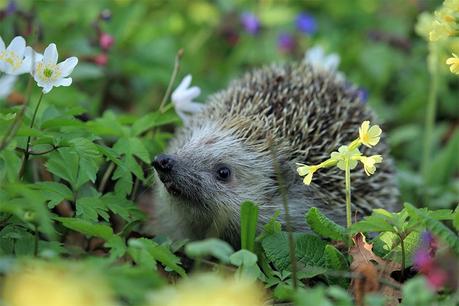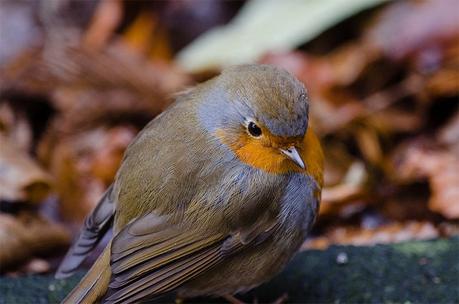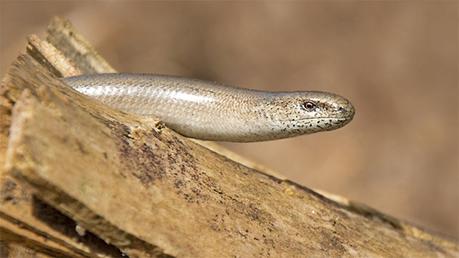
When people begin to talk about habitats for animals, you'd be forgiven for immediately thinking about the countryside. But, did you know that our gardens are just as crucial in the fight against declining species? Even the smallest of gardens, assuming they are free of chemicals, pesticides and anything else potentially harmful, can create a hugely diverse refuge for all kinds of wildlife.
Birds, small mammals and insects will all reap the benefits of your space, if you actively encourage them to make the most of it.
Bugs
Attracting more insects to your garden means that other creatures will be hot on their heels. Bug hotels are an excellent refuge for all different kinds of creepy crawlies.
You can either buy a ready-made bug hotel or create a solution as simple as cutting short lengths of hollow bamboo cane and stringing them together.
Then you can either leave it on the ground or hang it from a tree or fence to attract the non-aggressive, mason bee, which is known to be as effective a pollinator as 120 worker honeybees.
Hedgehogs

Numbers of our spiky little friends have plummeted by half since 2000. Hedgehogs wake from hibernation during March/April and will begin to look for food and a mate throughout spring.
You can make things easier by creating a 'hedgehog highway' by making a hole at the bottom of your fences - no bigger than a CD case, to prevent foxes and badgers - for the hedgehogs to come and go as they please.
You can even create a feeding station, by cutting a small hole in a plastic box, so a hedgehog can feed without the threat of being attacked by a cat or fox.
Birds

As it edges towards summer, birds require a large amount of protein, mainly when they begin to moult and breed, so it's important to feed them only specific foods for hygiene and health purposes, such as:
- Seeds & Oats: Black sunflower seed, pinhead oatmeal and high-quality seed mixtures.
- Worms: Mealworm and waxworm.
- Fruits: Soft apples, halved pears, bananas, grapes, soaked sultanas, raisins and currants.
- Don't feed them peanuts, fat or bread during this period as it can be detrimental to feeding nestlings. If you do decide to put out peanuts, ensure they are stored in mesh feeders so the birds can't take large chunks back to their nests which could pose a choking hazard to chicks.
- Don't leave out fat balls in warm weather, as they can turn rancid. Commercially produced fat bars are fine but must be discarded after three weeks.
Birds sync their breeding time to make the most of the natural foods on offer such as earthworms and caterpillars. If we happen to experience an unusually warm or cold spring, the natural processes that make these foods available to birds don't occur - their ability to find earthworms is severely hampered if the ground is hard during a warm spell for example. Leaving food out in your garden during this time allows the birds and their chicks to continue feeding.
Slow-Worms

Often incorrectly identified as baby snakes, slow-worms are seldom seen in Britain. Despite looking a lot like snakes, slow worms, are actually legless lizards. Slow-worms can grow up to 50cm in length - males are typically grey/brown in colour and females are brown with dark sides.
Slow-worms are good pest controllers, eating slow moving pests such as slugs and snails and are completely harmless to humans. Well-vegetated areas with thick ground covering are ideal for slow-worms and can be found in wooded areas, fields and gardens with compost heaps, rotting vegetation, logs and large flat rocks.
Stag Beetles

These formidable creatures are endangered in Britain, due, in part, to the increase in the numbers of magpies and crows.
To make a cheap and practical home for them, take a plastic bucket and cut 2″ holes evenly along the base and sides.
Then dig a hole for it in a relatively untouched area of the garden, deep enough, so the rim of the bucket sits just below the first layer of soil. Fill the bucket with chippings and soil and keep an eye out for any new lodgers. Stag beetle can live underground for 3-5 years, so it's crucial your contraption won't be disturbed.
Woodpiles
Not exactly the most glamorous of additions to your wildlife friendly garden, however, it is a very effective one. Pick a spot that attracts sun (you want it to trap some heat) and leaves partial shade (you don't want the wood to dry out).
Piling wood shavings from trees, plants and shrubs - logs about 4" thick with bark attached - are a perfect space for lichens, mosses and fungi to thrive, attract insects and create a shelter for small mammals.
Bird & Bat Boxes

Boxes can be a great option for proving bats and birds with much-needed shelter. Different sized boxes will attract different animals, for example, a 32mm entrance will attract house sparrows, whereas a slightly larger box with a 45mm entry will entice starlings.
The eaves of your home are a much better place to place bat boxes since bats are targeted by birds of prey who live in trees. Try setting a few in different directions, and if you have a pond, that's even better since bats like to nest near a fresh water supply.
Let the Garden Grow Wild
Well...not all of it. A pristine garden is no use to wildlife - the only way to mimic nature is by letting it do its thing.
Leaving a small section of your garden to grow wild will attract bees, butterflies, insects and the birds and small mammals which hunt them.
Fruit and nut trees are also a perfect way to attract all of the above - but you'll have to be quick if you're hoping to nab any of the fruit for yourself.
Ponds

Ponds are the best way to create a thriving ecosystem in your garden. Not only does it provide a fresh source of drinking water for birds and small mammals, but it also creates a breeding ground for frogs, toads and newts.
You don't need a huge pond, a small area of standing water can make all the difference. Even a large container filled with water, plant life, stones and bricks will attract insects, mammals, birds and amphibians.
Making our gardens into a wildlife-friendly haven doesn't mean we have to let them become unruly and turn into jungles. Every space, whether a large or a small one, can offer a home to our native species.
